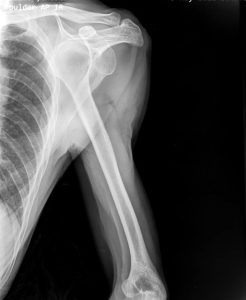What Could Be Behind the Ache?
Back again with back pain? You’re not alone – low back pain is one of the most common reasons people visit an osteopath. But not all back pain is created equal. There are several different causes and understanding what’s going on can help you manage it more effectively.
Call Body@Boronia to book with one of our osteopaths at (03) 9762 9445 because your spine deserves better than “just wait and see.”
Let’s break down five of the most common causes of low back pain we see in the clinic: disc bulge, sacroiliac joint (SIJ) dysfunction, facet joint arthropathy, lumbar muscle strain, and vertebral fracture. Each has its own quirks, and some may overlap, but recognising the differences is a crucial part of managing your symptoms.
Disc bulge: pressure on the problem
The discs in your spine are like jelly-filled cushions between the vertebrae. A disc bulge happens when part of the disc pushes out beyond its normal boundary often because of age-related wear or heavy lifting. This bulge may press on nearby nerves, causing sharp, shooting pain down the leg (sciatica), numbness, or weakness. But not all bulges cause pain – some are silent and only show up on scans.
Our osteopaths aim to reduce mechanical stress on the area to improve mobility and support muscular recovery where appropriate.
SIJ dysfunction: when the pelvis protests
The sacroiliac joints connect your spine to your pelvis. They don’t move much, but they’re critical for transferring weight between your upper body and legs. SIJ dysfunction may result from uneven loading, pregnancy, or trauma. It typically causes localised pain on one side of the lower back or buttock and may radiate into the thigh.
This type of low back pain may feel worse after prolonged standing or when changing positions. Osteopathy works to restore balance and movement around the pelvis and lumbar spine.
Facet joint arthropathy: spine joints getting stiff
Facet joints sit at the back of your spine and allow for twisting and bending. Over time, they can become irritated or arthritic – a condition called facet joint arthropathy. This type of low back pain often feels stiff in the morning and may improve with gentle movement but worsen with excessive bending or twisting.
Pain is typically localised and doesn’t radiate far. Osteopathic care may help ease the surrounding muscle tension and encourage healthier joint mechanics.
Lumbar spine muscle strain: the classic overdo
Muscle strains are one of the most frequent causes of low back pain, often the result of lifting too much, poor posture, or sudden awkward movements. The muscles of the lumbar spine may become overloaded, leading to microscopic tears, inflammation, and that familiar ache.
Symptoms are usually localised, and you may feel stiffness, tenderness, or spasms. With rest, gentle movement, and osteopathic support, recovery is often straightforward, though early care may help prevent chronicity.
Vertebral fracture: the one to rule out
Although less common, vertebral fractures should always be considered — especially in older adults, people with osteoporosis, or following trauma. A fracture in one of the vertebrae can cause sharp, deep pain and may worsen with movement or pressure. In these cases, immediate medical assessment is crucial.
If a fracture is suspected, your osteopath may refer you for imaging or medical care. Osteopathic treatment is not appropriate until a fracture is ruled out or has healed with medical guidance.
So what’s causing your lower back pain?
Every spine tells a story. Whether it’s a bulging disc or an unhappy sacroiliac joint, low back pain has many faces and a proper assessment is key to addressing it safely and effectively.
Osteopaths aim to support your recovery by improving movement, reducing strain on affected structures, and helping you build strength and resilience.
Call (03) 9762 9445 to make an appointment with an osteopath at Body@Boronia because Dr Google doesn’t do hands-on assessment.
Why not follow us on social media for more updates and advice and join the movement… literally.? We’re on Facebook and Instagram.
References
When needed, we research our content using a range of sources across both web and books. Regular references we use include:
- Foundations of Osteopathic Medicine, 4th ed. Seffinger et al. 2019
- Thieme Atlas of Anatomy, 4th ed. Gilroy et al. 2021.
- Clinical Sports Medicine: Injuries, 5th ed. Brukner & Khan. 2017.
- Principles of Anatomy & Physiology, 13th ed. Tortora & Derrickson. 2011.
- Differential Diagnosis and Management for the Chiropractor. 5th ed. Souza. 2016.
- Physiopedia website – https://www.physio-pedia.com/home/
- Pubmed website for latest articles – https://pubmed.ncbi.nlm.nih.gov/
- Google Scholar for latest articles – https://scholar.google.com/
- World Health Organisation website – https://www.who.int/
- Osteopathy Australia website – https://osteopathy.org.au/
- Australian Physiotherapy Association website – https://australian.physio/
- Chiropractic Australia website – https://www.chiropracticaustralia.org.au/
- Professional bodies websites and health conditions charity websites, like Arthritis Australia – https://arthritisaustralia.com.au/





